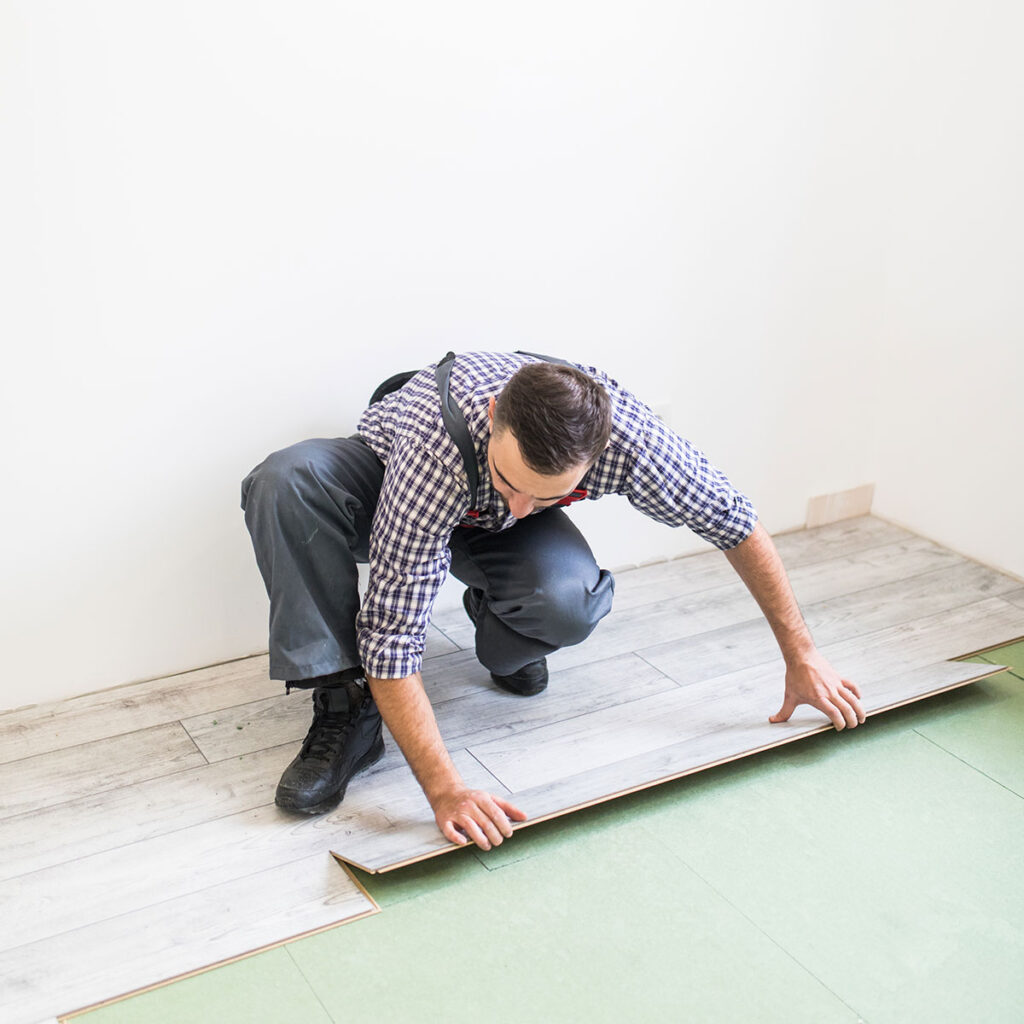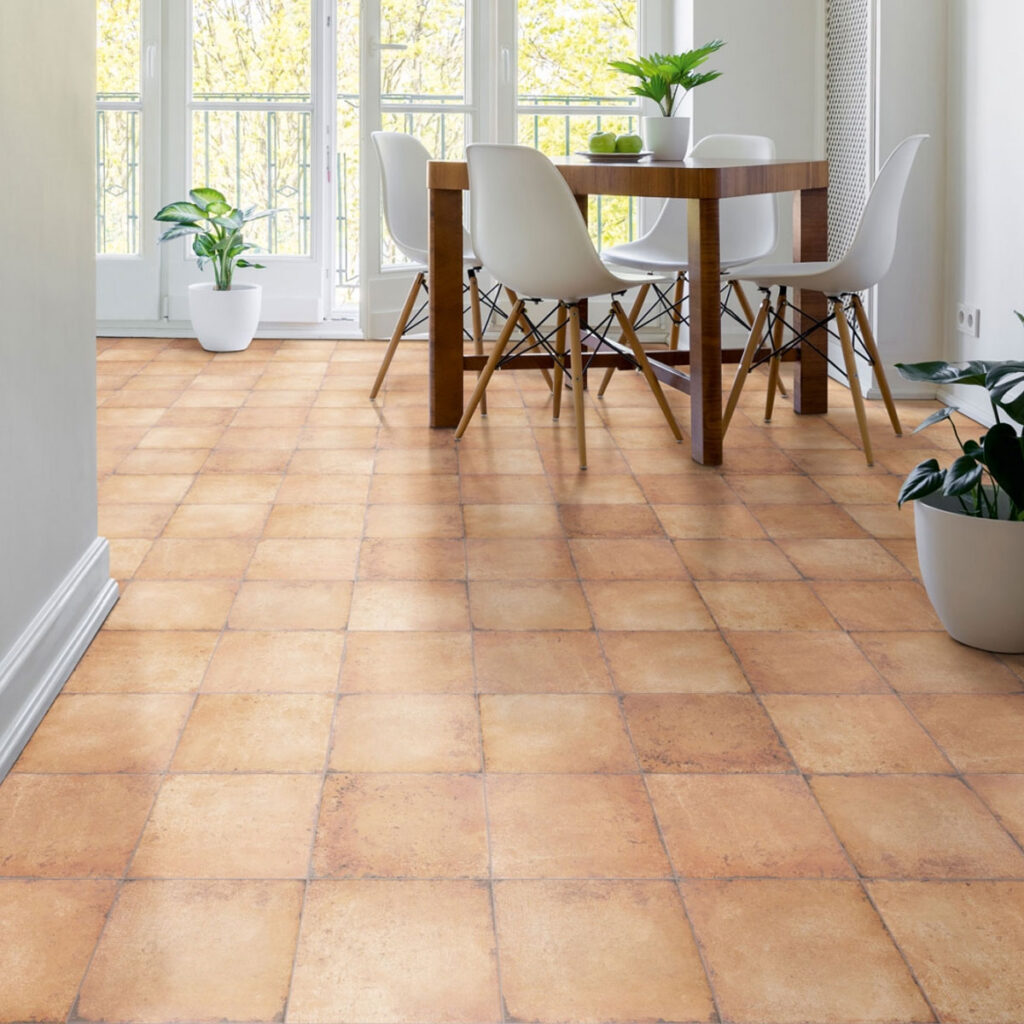In winter, flooring is key to maintaining comfort and warmth in the home. Choosing warm floors improves the thermal sensation and optimizes energy consumption by better retaining heat. From natural wood to porcelain or vinyl, there are options for different styles, needs and budgets. Here are the best floors for a warm and cozy winter.
Advantages of choosing warm floors in winter
- Energy efficiency: They help to better maintain the temperature in the home, reducing the need for heating and, therefore, energy costs.
- Feeling of comfort: Walking barefoot or wearing socks, these floors provide a warm and pleasant underfoot feel, ideal for winter.
- Versatile style: Available in different materials, colors and finishes to suit any decor.
- Easy maintenance: Many of these floors, such as laminate and vinyl, are easy to clean and maintain, even in cold and wet conditions.
Types of floors that will help you keep warm in winter
Choosing the right flooring for winter can make a big difference in how your home feels during the colder months. Here’s what the best options are and what advantages they offer, explained in a clear and easy-to-understand way.
Natural wood flooring
Natural wood floors combine elegance and functionality. With insulating properties, they retain heat and keep your rooms warm. Woods such as Ipe or Cuperized Pine are resistant and cozy, although in humid areas they may need more care.
Laminate flooring
Laminates are an economical and attractive option that mimics wood. Compatible with radiant heating, they distribute heat evenly. Available in designs to suit all tastes, they are ideal for cold winters and areas with sudden temperature changes.

Vinyl flooring and decking
Practical and comfortable, vinyl floors and floorboards offer a warm footprint that is welcome in winter. Resistant to moisture and wear, they are perfect for any room, including kitchens and bathrooms. Plus, there’s a wide variety of designs to match any style.
Porcelain tile floors
Although not usually associated with warmth, porcelain tiles stand out when combined with radiant heating, distributing heat efficiently. They are ideal for wet or snowy climates thanks to their resistance, and are available in modern finishes such as wood or microcement.

Accessories that enhance winter warmth
Sometimes the floor alone is not enough to combat the cold, but with a few accessories you can make your home much warmer:
- Traditional rugs: Perfect for living rooms and bedrooms. Thick rugs not only add an extra layer of insulation, but also add a cozy touch to the space.
- Underfloor heating systems: If you are planning a renovation, installing underfloor heating can be an excellent investment. It is compatible with laminate, vinyl and porcelain floors, and ensures a uniform feeling of comfort throughout the room.
Tips for choosing the perfect flooring for winter
Choosing the right flooring to keep your home warm and cozy in winter may seem complicated, but with these tips you’ll have a much better idea.
Analyze the climate in your region
Climate plays a key role in deciding which type of soil is most suitable:
- Humid climates: If you live in an area with high humidity or frequent rainfall, water-resistant flooring, such as vinyl or porcelain tile, is ideal. These materials not only withstand the humid environment well, but are also easy to maintain.
- Dry cold climates: For areas with low temperatures but low humidity, natural wood or laminate floors are perfect. Their ability to retain heat makes them a very cozy option.
Consider the use of space
The type of room has a great influence on the floor you should choose:
- Living rooms and bedrooms: In these areas, comfort is key. Laminate or wood floors are excellent for creating warm and pleasant environments.
- Kitchens and bathrooms: These areas require materials that better withstand moisture and spills, such as vinyl or porcelain tiles. In addition, their durability makes them practical and functional options.
Adapt your choice to your budget
Not all flooring costs the same, but that doesn’t mean you can’t find an option that combines quality and price:
- Economical options: Vinyl and laminates are more affordable while offering a good level of thermal comfort.
- Long-term investments: If you can afford to spend a little more, natural wood or porcelain floors are a durable and aesthetically stunning choice.
Combines functionality and design
Flooring should not only serve a practical purpose, but also blend in with the style of your home. Look for finishes that harmonize with the décor of your rooms. For example, a laminate floor with a rustic wood look can complement a warm, traditional décor, while a micro-cement-look porcelain tile is perfect for modern settings.
Choosing the right flooring for winter will not only improve the warmth and comfort of your home, but also enhance its design. By following these tips, you’ll find the perfect option that balances functionality, aesthetics and budget.
At ParaTuReformawe offer a wide variety of floors designed to transform your home into a warm, comfortable and stylish space. Explore our options and choose the floor that best suits your perfect winter.
Which soil is more efficient for humid climates?
Vinyl and porcelain floors are ideal for their resistance to water and low temperatures.
Is laminate flooring compatible with radiant heating?
Yes, many laminate flooring models are designed to work with radiant heating.
What are the advantages of natural wood flooring over vinyl?
Natural wood flooring provides a more classic aesthetic and natural insulating properties, while vinyl flooring stands out for its resistance and low maintenance.
What is the most economical option for warm soils in winter?
Laminate and vinyl flooring offer excellent value for money and are easy to install.






